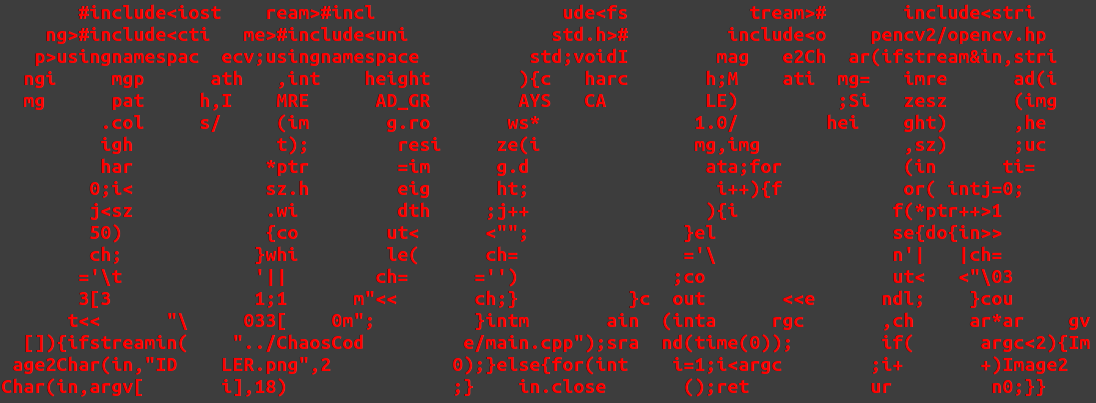1
2
3
4
5
6
7
8
9
10
11
12
13
14
15
16
17
18
19
20
21
22
23
24
25
26
27
28
29
30
31
32
33
34
35
36
37
38
39
40
41
42
43
44
45
46
47
48
49
50
51
52
53
54
55
56
57
58
59
60
61
62
63
64
65
66
67
68
69
70
71
72
73
74
75
76
77
78
79
80
81
82
83
84
85
86
87
88
89
90
91
92
93
94
95
96
97
98
99
100
101
102
103
104
105
106
107
108
109
110
111
112
113
114
115
116
117
118
119
120
121
122
123
124
125
126
127
128
129
130
131
132
133
134
135
136
137
138
139
140
141
142
143
144
145
146
147
148
149
150
151
152
153
154
155
156
157
158
159
160
161
162
163
164
165
166
167
168
169
170
171
172
173
| #include "HOG-SVM.hpp"
#include "Macro.hpp"
using namespace cv;
using namespace ml;
HOG_SVM::HOG_SVM()
{
svm = SVM::create();
}
HOG_SVM::HOG_SVM(std::string model_path)
{
svm = Algorithm::load<SVM>(model_path);
}
bool HOG_SVM::LoadModel(std::string model_path)
{
bool flag = true;
try{
svm = Algorithm::load<SVM>(model_path);
}
catch (std::exception e){
MESSAGE_COUT("ERROR", e.what())
flag = false;
}
return flag;
}
Mat HOG_SVM::ExtractFeature(Mat Img, Size mrs)
{
* @brief HOG_SVM::ExtractFeature
The story behind 1764
For example
window size is 64x64, block size is 16x16 and block setp is 8x8£¬cell size is 8x8,
the block number window contained is (£¨64-16£©/8+1)*((64-16)/8+1) = 7*7 = 49,
the cell number each block contained is (16/8)*(16/8) = 4
every cell can project 9 bin, and each bin related to 9 vector
so feature_dim = B x C x N, and caulated result is 1764
(B is each window's blocks number, C is every block's cell number, n is bin number)
*/
resize(Img, Img, mrs);
HOGDescriptor *hog = new HOGDescriptor(cvSize(64, 64), cvSize(16, 16), cvSize(8, 8), cvSize(8, 8), 9);
std::vector<float> descriptors;
hog->compute(Img, descriptors, Size(1, 1), Size(0, 0));
return Mat(descriptors).t();
}
Mat HOG_SVM::GetDataSet(std::vector<std::string> data_path)
{
int nImgNum = data_path.size();
int success = 0;
Mat data_mat, src;
for (int i = 0; i < nImgNum; i++){
src = imread(data_path[i]);
if (src.cols && src.rows){
MESSAGE_COUT("PROCESS", FileOperation::findFileName(data_path[i]) << "\t" << success++)
Mat post = ExtractFeature(src, Size(64, 64));
data_mat.push_back(post);
}
}
return data_mat;
}
Mat HOG_SVM::GetDataSet(std::vector<std::string> data_path, std::vector<GroundTruth>& gt, int c)
{
int nImgNum = data_path.size();
int success = 0;
Mat data_mat;
Mat src;
std::string imgname;
for (int i = 0; i < nImgNum; i++){
src = imread(data_path[i]);
if (src.cols && src.rows){
imgname = FileOperation::findFileName(data_path[i]);
MESSAGE_COUT("PROCESS", imgname << "\t" << success++)
Mat post = ExtractFeature(src, Size(64, 64));
data_mat.push_back(post);
gt.push_back(GroundTruth(c, imgname));
}
}
return data_mat;
}
int HOG_SVM::SetSvmParameter(int sv_num, int c_r_type, int kernel, double gamma)
{
TermCriteria criteria = TermCriteria(CV_TERMCRIT_EPS, sv_num, FLT_EPSILON);
svm->setType(c_r_type);
svm->setKernel(kernel);
if (kernel == SVM::RBF) svm->setGamma(gamma);
svm->setTermCriteria(criteria);
return 1;
}
int HOG_SVM::Training(Mat& trainSet, Mat& label, bool save,std::string dir)
{
SetSvmParameter(200, SVM::C_SVC, SVM::LINEAR, 0);
Ptr<TrainData> traindata = ml::TrainData::create(trainSet, ROW_SAMPLE, label);
svm->train(traindata);
if (save){
svm->save(dir+"HOG-SVM-MODEL.xml");
}
return 1;
}
int HOG_SVM::Testing(Mat& testSet, float gt)
{
int error = 0;
int postnum = testSet.rows;
Mat res = Mat::zeros(postnum, 1, CV_32FC1);
svm->predict(testSet, res);
for (int i = 0; i < postnum; i++)
if (res.at<float>(i, 0) != gt)
error++;
std::cout << error << "/" << postnum << std::endl;
return error;
}
int HOG_SVM::Testing(Mat& testSet, std::vector<GroundTruth> gt)
{
int error = 0;
int postnum = testSet.rows;
Mat res = Mat::zeros(postnum, 1, CV_32FC1);
svm->predict(testSet, res);
for (int i = 0; i < postnum; i++)
if (res.at<float>(i, 0) != gt[i].label){
MESSAGE_COUT("ERROR", gt[i].imgname << "\t" << gt[i].label)
error++;
}
MESSAGE_COUT("RESULT", error << "/" << postnum)
return error;
}
float HOG_SVM::Predict(Mat& image)
{
if (!image.rows) return -1;
Mat gray;
cvtColor(image, gray, CV_BGR2GRAY);
Mat post = ExtractFeature(gray, Size(64, 64));
gray.release();
return svm->predict(post);
}
float HOG_SVM::EndToEnd(std::string data_path)
{
std::string trainPath = data_path + "train\\";
std::vector<std::string> trainPathPositive = this->getFilepath(trainPath + "1\\");
std::vector<std::string> trainPathNegative = this->getFilepath(trainPath + "-1\\");
std::string testPath = data_path + "test\\";
std::vector<std::string> testPathPositive = FileOperation::getCurrentDir(testPath + "1\\");
std::vector<std::string> testPathNegative = FileOperation::getCurrentDir(testPath + "-1\\");
Mat trainSet, label;
Mat trainSetP = GetDataSet(trainPathPositive);
Mat labelP = Mat::ones(trainSetP.rows, 1, CV_32SC1);
Mat trainSetN = GetDataSet(trainPathNegative);
Mat labelN = Mat::ones(trainSetN.rows, 1, CV_32SC1)*(-1);
trainSet.push_back(trainSetP);
trainSet.push_back(trainSetN);
label.push_back(labelP);
label.push_back(labelN);
Training(trainSet, label, true, data_path);
std::vector<GroundTruth> gtP, gtN;
Mat testSetP = GetDataSet(testPathPositive, gtP, 1);
Mat testSetN = GetDataSet(testPathNegative, gtN, -1);
int error = Testing(testSetP, gtP) + Testing(testSetN, gtN);
return 1.0f*error / (testSetP.rows + testSetN.rows);
}
|




